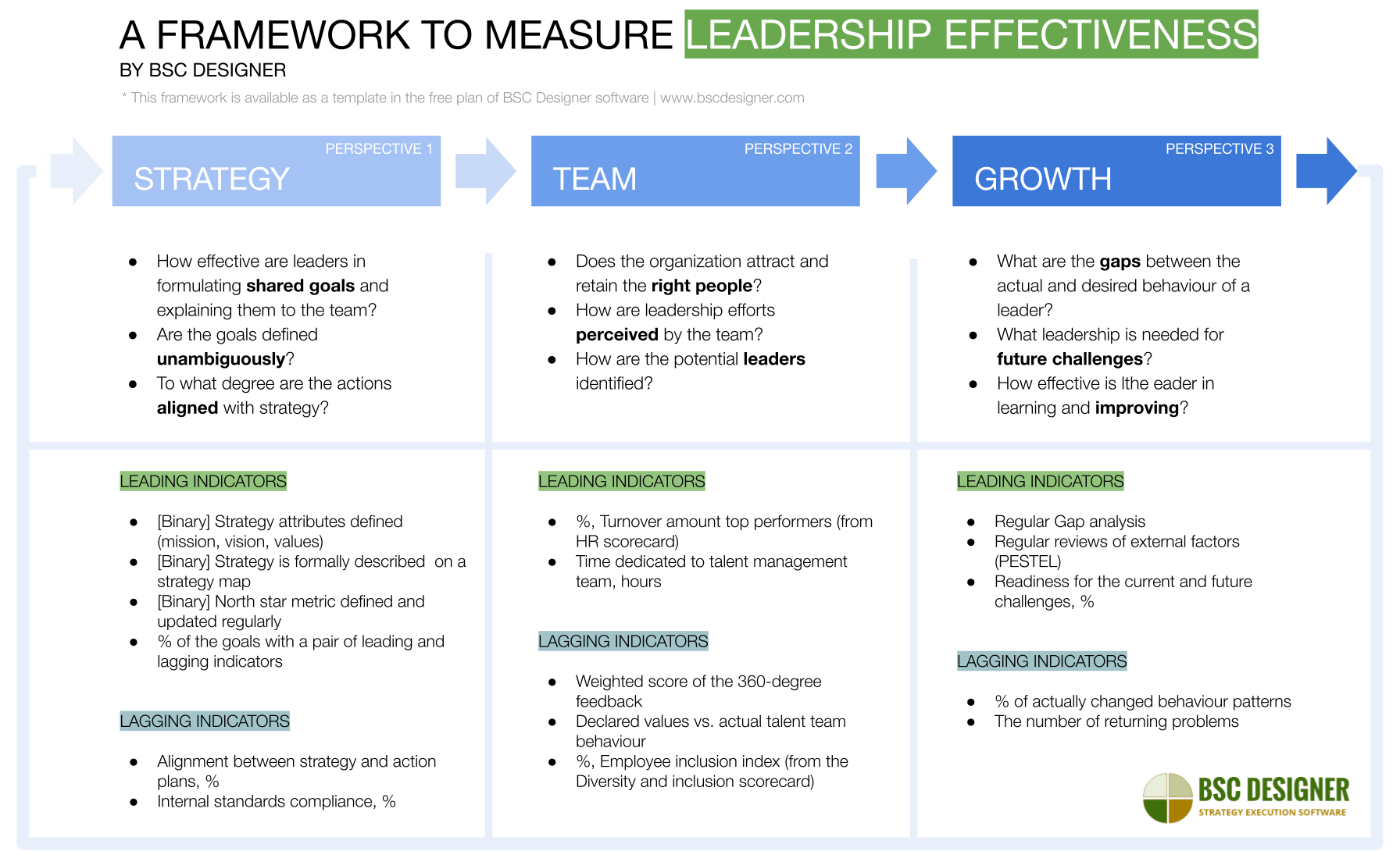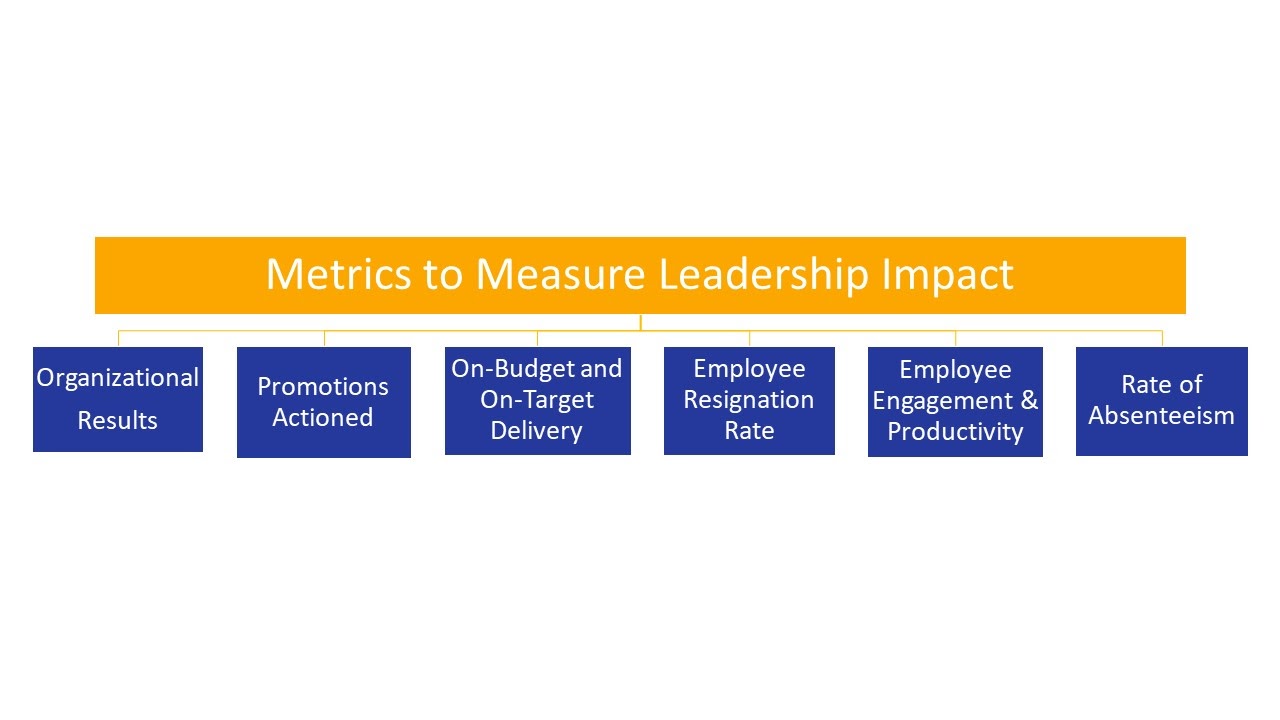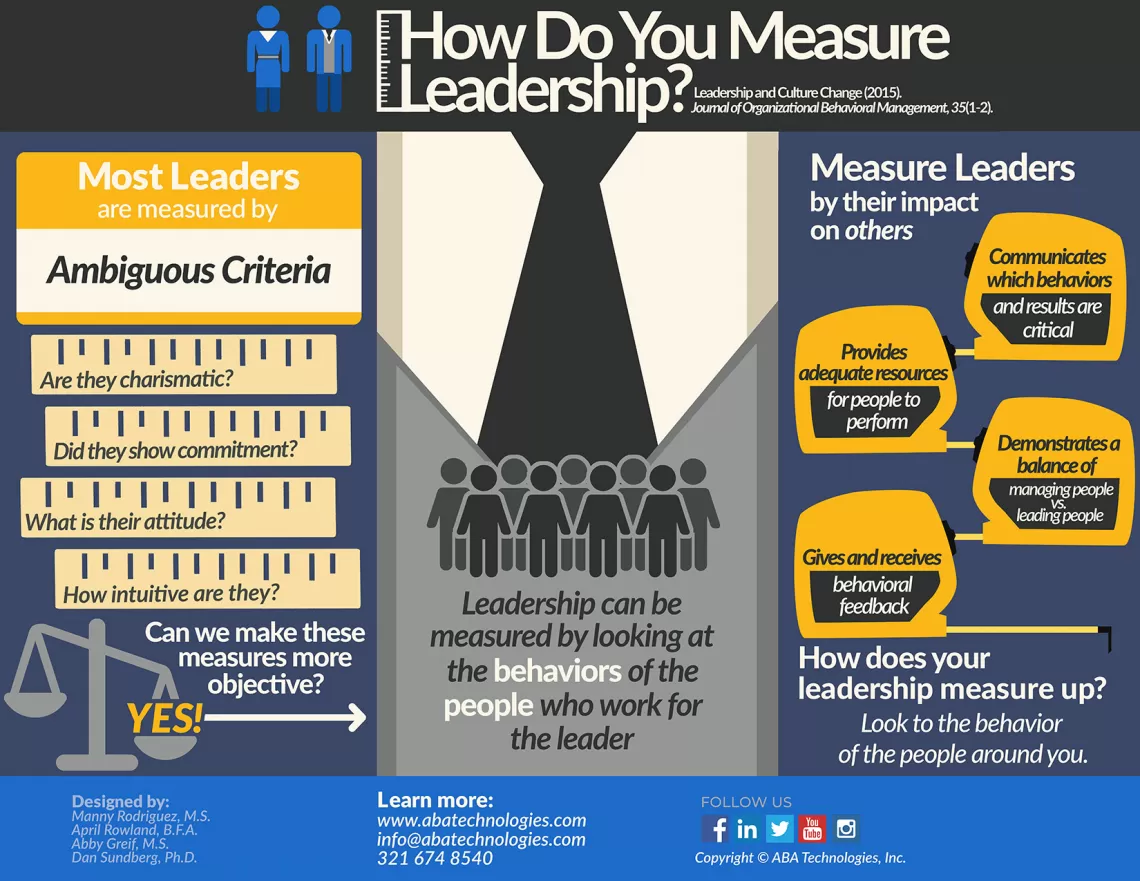How to Measure Leadership?
Leadership can be measured by assessing the impact of the leader’s actions on achieving goals and inspiring team members to excel. Leadership measurement involves evaluating a leader’s ability to motivate, guide, and influence others towards a common objective.
By assessing their actions, decision-making, and communication skills, organizations can determine the effectiveness of a leader in driving results and fostering a positive work environment. Leaders who can empower and develop their team members, while also adapting to changing circumstances, demonstrate strong leadership qualities.
Ultimately, the measure of leadership lies in the ability to achieve goals, cultivate a motivated workforce, and leave a lasting impact on the organization’s success.

Credit: bscdesigner.com
Importance Of Leadership Measurement
Leadership plays a vital role in the success and growth of any organization. But how do you measure leadership? The importance of leadership measurement cannot be overstated. Effective leadership is directly linked to employee engagement, productivity, and overall company performance. Therefore, it is crucial to have a reliable method for evaluating and quantifying leadership capabilities.
Benefits Of Measuring Leadership
Measuring leadership provides several key benefits that contribute to the overall success of an organization. These benefits include:
- Identification of Strong Leaders: By measuring leadership, organizations can identify individuals with exceptional leadership skills. This knowledge allows companies to nurture and develop these leaders, resulting in a stronger and more cohesive leadership team.
- Improved Decision Making: Measuring leadership helps in identifying and evaluating leaders’ decision-making abilities. It enables organizations to recognize leaders who make sound and effective decisions, which positively impacts the entire company.
- Enhanced Employee Engagement: Effective leadership has a direct correlation to employee engagement. By measuring leadership, organizations can ensure their leaders possess the skills to motivate and inspire employees, leading to increased job satisfaction and productivity.
Challenges In Measuring Leadership
While measuring leadership brings significant benefits, it is not without its challenges. Some of the key challenges in measuring leadership include:
- Lack of Objective Metrics: Leadership traits can often be subjective and challenging to measure objectively. Traits such as emotional intelligence, adaptability, and creativity may not have concrete metrics for evaluation.
- Complexity of Leadership: Leadership is a complex skill set that encompasses various dimensions. Measuring leadership requires considering multiple factors such as communication, decision-making, strategic thinking, and team-building skills.
- Changing Organizational Needs: The criteria for effective leadership may vary based on the organization’s size, industry, and strategic goals. Measuring leadership should take these specific needs into account to provide accurate assessments.
Despite these challenges, organizations must invest in leadership measurement to ensure they have capable leaders guiding them towards success. By understanding the importance of leadership measurement, organizations can take the necessary steps to develop robust evaluation processes and identify opportunities for leadership growth.

Credit: alcorfund.com
Key Metrics For Measuring Leadership
When it comes to measuring leadership performance, it is crucial to have key metrics in place that provide tangible insights.
Employee Satisfaction And Engagement
are essential measures of effective leadership. Happy and engaged employees are more productive, motivated, and invested in the success of the organization. To gauge this metric, organizations can conduct regular employee surveys, one-on-one meetings, or utilize online collaboration tools to gather feedback and measure satisfaction levels.Team Performance And Productivity
is another critical metric for evaluating leadership effectiveness. A strong leader inspires and encourages their team members to perform at their best. Key performance indicators such as project deadlines, task completion rates, and quality metrics can be utilized to measure team productivity. Regular performance reviews and tracking individual and team goals can provide valuable insights into leadership effectiveness in driving team performance.Employee Turnover And Retention
is a key metric that directly reflects the impact of leadership. A high turnover rate indicates dissatisfaction or lack of engagement, which may be attributed to ineffective leadership. On the other hand, a strong leader who fosters a positive work environment and supports employee growth and development will likely have a higher retention rate. This metric can be measured by analyzing turnover rates, conducting exit interviews, and implementing retention strategies to address any issues identified.| Metric | Measurement Method |
|---|---|
| Employee satisfaction and engagement | Regular surveys, one-on-one meetings, online collaboration tools |
| Team performance and productivity | Performance reviews, goal tracking, KPIs |
| Employee turnover and retention | Turnover rates, exit interviews, retention strategies |
By focusing on these key metrics, organizations can gain valuable insights into leadership effectiveness and make informed decisions to improve overall performance. Remember, effective leadership is not only about achieving short-term goals but also about fostering a positive and productive work culture that drives long-term success.
Qualitative Methods For Assessing Leadership
When it comes to measuring leadership, qualitative methods provide valuable insights into an individual’s skills, abilities, and effectiveness as a leader. These methods go beyond just looking at numbers and delve into the subjective aspects of leadership. Two commonly used qualitative methods for assessing leadership are 360-degree feedback and leadership competency assessments.
360-degree Feedback
One effective way to gain a comprehensive view of a leader’s performance is through 360-degree feedback. This process involves collecting feedback from multiple sources, including subordinates, peers, and senior-level executives. Each person provides their observations and assessments of the leader’s strengths and areas for improvement.
This method allows for a well-rounded evaluation as it takes into account a variety of perspectives. By gathering feedback from different angles, a more accurate picture of the leader’s performance can be formed. It also provides the leader with valuable insights into how their behavior and actions are perceived by others.
Leadership Competency Assessments
Another qualitative method for assessing leadership is through leadership competency assessments. These assessments are designed to evaluate specific leadership competencies, such as communication skills, decision-making abilities, and problem-solving capabilities. Using established frameworks and criteria, these assessments measure a leader’s effectiveness in various areas of leadership.
Leadership competency assessments provide a structured approach to evaluate leadership capabilities. They help identify strengths and areas for improvement, allowing leaders to focus on developing their skills in specific areas. These assessments can be tailored to the unique needs of different organizations, ensuring that the evaluation is aligned with their leadership expectations and goals.
In Conclusion
Qualitative methods, such as 360-degree feedback and leadership competency assessments, offer valuable insights into a leader’s performance and capabilities. By incorporating multiple perspectives and evaluating specific competencies, these methods provide a comprehensive understanding of leadership effectiveness. Organizations can utilize these qualitative methods to assess and develop their leaders, ultimately driving success and growth.
Quantitative Methods For Assessing Leadership
When it comes to measuring leadership, quantitative methods provide valuable insights into a leader’s performance. These methods utilize specific metrics and indicators to assess key aspects of leadership effectiveness. By employing quantitative methods, organizations can gain objective and measurable data to evaluate leadership performance and make informed decisions regarding talent development and succession planning. In this section, we will explore two prominent quantitative methods for assessing leadership: Key Performance Indicators (KPIs) and Return on Investment (ROI).
Key Performance Indicators (kpis)
KPIs are essential tools for measuring leadership performance and productivity. They allow organizations to track specific metrics that reflect the achievement of strategic objectives and goals. By establishing clear and measurable KPIs, businesses can assess how well their leaders are driving progress and delivering results.
To measure leadership effectively using KPIs, organizations must identify the right indicators that align with their unique goals and objectives. Examples of leadership-related KPIs include:
- Employee engagement: quantifying the level of employee satisfaction and commitment towards their work and the organization.
- Revenue/profit growth: measuring the leader’s impact on driving financial success.
- Team performance: evaluating how well a leader inspires and motivates their team to achieve optimal results.
By regularly monitoring these KPIs, organizations can assess the effectiveness of their leadership and identify areas for improvement.
Return On Investment (roi)
Return on Investment (ROI) is another quantitative method that provides organizations with a measure of how much value a leader brings to the table. ROI determines the return generated from investing in leadership development programs or hiring a leader.
Calculating ROI involves considering the costs and benefits associated with leadership initiatives. By comparing the financial investment with the impact on key business outcomes, organizations can assess the effectiveness and value of their leadership development efforts.
Typically, ROI is expressed as a ratio or a percentage, providing a clear and quantifiable measure of the value a leader brings to the organization.
Best Practices For Measuring Leadership
When it comes to measuring leadership, it’s crucial to have a well-defined strategy in place. Developing a comprehensive measurement strategy allows organizations to assess the effectiveness of their leaders in driving growth and achieving success. In this blog post, we will explore the best practices for measuring leadership and highlight the key steps to consider.
Developing A Comprehensive Measurement Strategy
To accurately measure leadership, it’s important to develop a comprehensive measurement strategy that aligns with the organization’s goals and objectives. This involves identifying the key leadership competencies that are essential for success in specific roles or within the organization as a whole.
One effective way to develop a comprehensive measurement strategy is to establish clear and measurable goals related to leadership development. These goals should be aligned with the organization’s overall strategy and should be specific, attainable, relevant, and time-bound. By setting measurable goals, organizations can track their progress and identify areas for improvement.
Additionally, organizations should consider using a combination of both quantitative and qualitative measures to assess leadership effectiveness. Quantitative measures, such as 360-degree feedback surveys or performance metrics, provide objective data that can be compared over time. On the other hand, qualitative measures, such as interviews or focus groups, allow for a deeper understanding of leaders’ strengths and development areas.
Regularly Reviewing And Adjusting Metrics
Measuring leadership is an ongoing process, and it’s important to regularly review and adjust the metrics being used. As organizational needs and goals evolve, so should the measurement criteria. Leaders should regularly review the metrics being used and make adjustments as necessary to ensure they capture the desired leadership behaviors and outcomes.
Leadership metrics should be reviewed at least annually to determine their effectiveness and relevance. Organizational changes, such as new strategies or shifts in market conditions, may require updates to the metrics to ensure they align with the current business context. Regularly reviewing and adjusting metrics helps ensure that the measurement strategy remains valid and provides meaningful insights into leadership effectiveness.
Involving Leaders In The Measurement Process
When measuring leadership, it’s essential to involve leaders in the measurement process. Involving leaders not only increases their buy-in and commitment to the measurement strategy but also allows them to provide valuable input into the metrics used. Leaders understand the intricacies of their roles and can offer insights into the key behaviors and outcomes that are critical for success.
One effective way to involve leaders in the measurement process is to include them in the development of the measurement strategy. Seek their input and feedback when defining the leadership competencies and selecting the metrics to be used. This collaborative approach ensures that the measurement strategy reflects the organization’s unique leadership needs and context.
Furthermore, leaders should be provided with regular feedback on their performance based on the established metrics. This feedback helps them understand their strengths and areas for improvement, allowing them to take targeted actions to enhance their leadership skills.
To sum up, measuring leadership requires a comprehensive strategy that aligns with organizational goals, ongoing review and adjustment of metrics, and involvement of leaders in the measurement process. By implementing these best practices, organizations can accurately gauge leadership effectiveness and drive continuous improvement in their leadership development programs.

Credit: intellihr.com
Frequently Asked Questions Of How Do You Measure Leadership?
How Do You Measure Leadership?
Measuring leadership involves evaluating traits such as communication skills, ability to inspire, and results achieved. Evaluations could include 360-degree feedback, performance metrics, and peer assessments.
What Are The Common Characteristics Of Effective Leaders?
Effective leaders demonstrate qualities such as strong communication, empathy, adaptability, and the ability to empower others. They provide clear direction, promote teamwork, and are accountable for their actions.
How Can Leadership Impact Organizational Success?
Leadership plays a crucial role in shaping an organization’s success. Strong leaders inspire and motivate their teams, foster innovation, and create a positive work culture. They set clear goals, make informed decisions, and drive productivity and growth.
Conclusion
Overall, measuring leadership can be a challenging task but not impossible. By considering various factors such as communication skills, decision-making abilities, and the ability to inspire and motivate others, we can gain insights into an individual’s leadership capability. It’s important to remember that leadership is not a one-size-fits-all concept, and different leaders may excel in different areas.
Ultimately, leadership is about creating a positive impact on individuals and organizations, and the true measure lies in the collective success achieved under their guidance.



